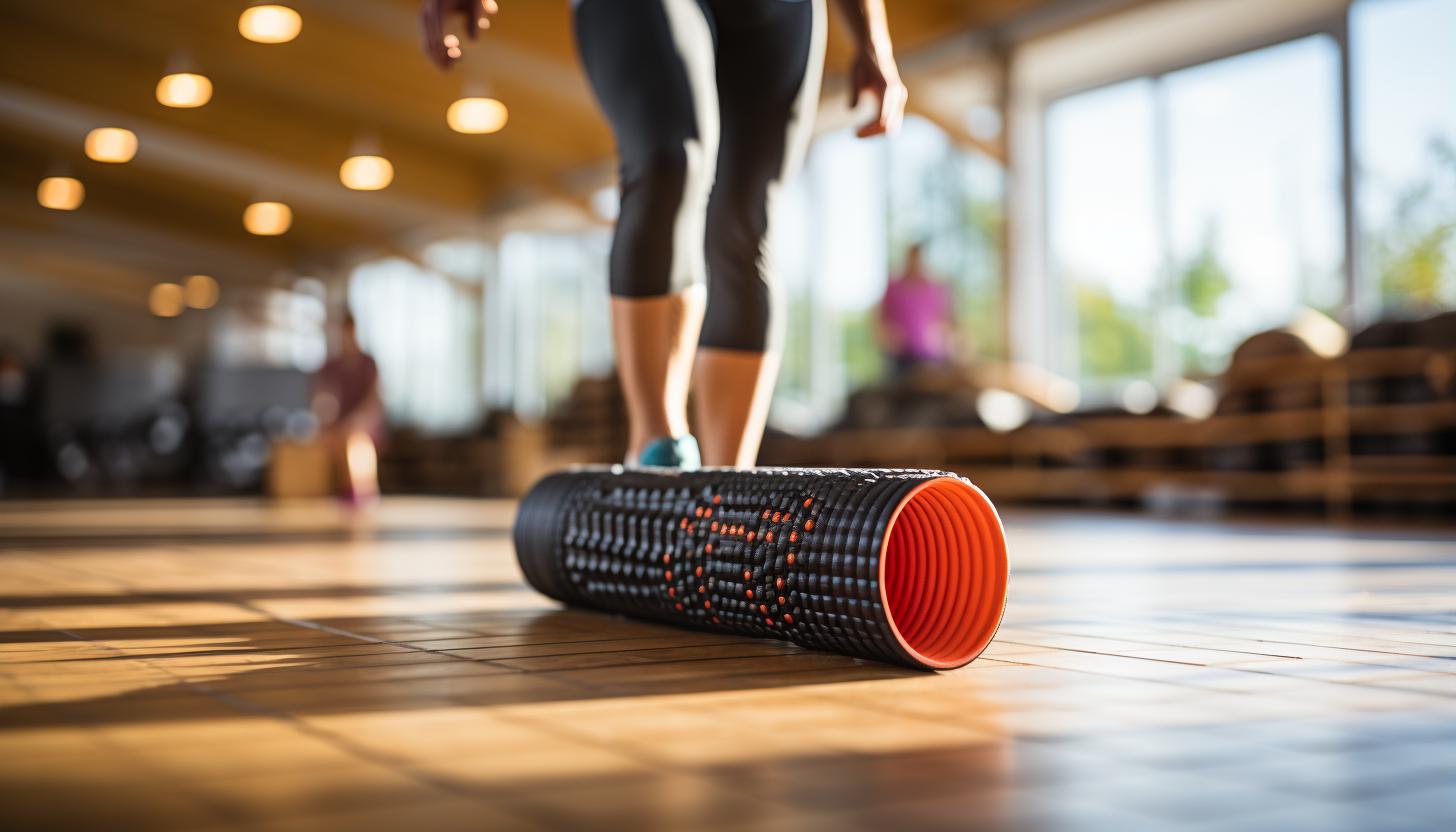Tips for Managing Achilles Tendonitis

Are you struggling with Achilles tendonitis and looking for effective ways to manage the pain? Well, look no further!
This article is packed with practical tips and expert advice on how to relieve discomfort, prevent further injury, and speed up your recovery.
From understanding the causes of Achilles tendonitis to exploring the best treatment options available, we’ve got you covered.
So, are you ready to take control of your Achilles tendonitis and get back on track? Let’s dive in!
Understanding Achilles Tendonitis

To understand Achilles tendonitis, you should know that it is a common condition. It occurs when the Achilles tendon becomes inflamed and causes pain in the back of your ankle. This tendon connects your calf muscles to your heel bone. It is responsible for helping you walk, run, and jump.
There are several factors that can contribute to the development of Achilles tendonitis. Overuse or repetitive strain on the tendon due to activities such as running or jumping can cause tiny tears in the tissue, leading to inflammation. Tight calf muscles can also put additional stress on the tendon, making it more prone to injury.
The symptoms of Achilles tendonitis typically include pain and stiffness in the back of your ankle, especially after physical activity or prolonged periods of rest. You may also experience swelling and tenderness along the length of the tendon. In severe cases, there may be a noticeable thickening or nodules along the tendon.
It is important to recognize these symptoms early on as untreated Achilles tendonitis can lead to more serious complications such as a partial or complete tear of the tendon. If you suspect you have Achilles tendonitis, it is recommended that you seek medical attention for an accurate diagnosis and appropriate treatment plan.
Identifying the Causes of Achilles Tendonitis

Identifying the causes of Achilles tendonitis can help you better understand how to prevent it. This common condition occurs when the Achilles tendon, which connects the calf muscles to the heel bone, becomes inflamed or irritated. By recognizing the potential causes of this injury, you can take proactive steps to mitigate your risk.
Here are four main factors that contribute to Achilles tendonitis:
1. Overuse and repetitive activities: Engaging in activities that involve repetitive movements, such as running or jumping, without giving your body enough time to rest and recover can strain the Achilles tendon.
2. Incorrect footwear: Wearing shoes that do not provide proper support or cushioning for your feet can increase stress on the Achilles tendon.
3. Tight calf muscles: If your calf muscles are tight and lack flexibility, they can place additional strain on the Achilles tendon during physical activity.
4. Sudden increase in intensity or duration of exercise: Rapidly increasing the intensity or duration of exercise without gradually building up strength and endurance in your lower legs can lead to overexertion and potentially cause Achilles tendonitis.
By being aware of these causes, you can make informed choices regarding your physical activity levels, footwear selection, stretching routines, and training progression to reduce your risk of developing Achilles tendonitis.
Remember that early intervention is crucial if you start experiencing symptoms such as pain, swelling, stiffness in the back of your ankle.
Preventive Measures for Achilles Tendonitis

To prevent Achilles tendonitis, you should incorporate proper warm-up exercises into your fitness routine. This is essential to prepare your muscles and tendons for the physical activity ahead. Before engaging in any sports or exercise, take a few minutes to perform dynamic stretches that target the calf muscles and Achilles tendon. These include heel raises, ankle circles, and leg swings. By doing these preventive exercises regularly, you can improve the flexibility of your calf muscles and reduce the risk of developing Achilles tendonitis.
Stretching techniques are also crucial in preventing this condition. Static stretching after a workout helps to maintain flexibility and lengthen the muscles surrounding the Achilles tendon. To do this, stand facing a wall with one foot forward and lean towards it while keeping both heels on the ground. Hold this stretch for about 30 seconds before switching sides. Additionally, foam rolling can be beneficial in releasing tension in the calf muscles.
Incorporating these preventive exercises and stretching techniques into your fitness routine will help keep your Achilles tendon strong and flexible, reducing the chances of developing painful inflammation or injury. Remember to always listen to your body’s signals and gradually increase intensity to avoid overuse or excessive strain on these delicate structures.
Effective Treatment Options for Achilles Tendonitis

There are several effective treatment options available for Achilles tendonitis. These include rest, ice, compression, and elevation (RICE method), as well as nonsteroidal anti-inflammatory drugs (NSAIDs) to reduce pain and inflammation.
Here are four additional alternative therapies and home remedies that can help alleviate the symptoms of Achilles tendonitis:
1. Physical therapy: Working with a physical therapist can help strengthen the muscles surrounding the affected tendon and improve flexibility. They may also use techniques such as ultrasound or electrical stimulation to promote healing.
2. Stretching exercises: Regularly stretching your calf muscles can relieve tension on the Achilles tendon. Focus on gentle, controlled stretches that target both the calf muscles and the Achilles tendon itself.
3. Eccentric exercises: These specialized exercises involve gradually lengthening the affected tendon through controlled movements. They have been shown to be particularly effective in treating chronic Achilles tendonitis.
4. Shoe modifications: Wearing shoes with proper support and cushioning can reduce stress on the Achilles tendon. Inserts or orthotics may also provide additional support and stability.
Recovery and Rehabilitation From Achilles Tendonitis

When recovering from Achilles tendonitis, it’s crucial to follow a rehabilitation program that includes exercises to strengthen the affected muscles and improve flexibility. Rehabilitation exercises play a vital role in helping you regain strength and range of motion in your ankle and lower leg. These exercises focus on gradually increasing the load on your Achilles tendon while also working on improving balance and stability.
One important type of rehabilitation exercise is eccentric calf raises. This exercise involves standing on the edge of a step or curb with your heels hanging off, then slowly lowering your heels down below the step and raising them back up using only the affected leg. This movement helps to strengthen the calf muscles and promotes healing of the Achilles tendon.
Stretching techniques are also an essential part of recovery from Achilles tendonitis. Gentle stretching can help alleviate tightness in the calf muscle, which can contribute to strain on the tendon. You can perform simple stretches such as standing with one foot behind you, keeping both feet flat on the ground, and leaning forward into a wall until you feel a gentle stretch in your calf.
Conclusion
Congratulations! You’ve now armed yourself with the knowledge and tools to conquer Achilles tendonitis.
By understanding its causes, taking preventive measures, and seeking effective treatment options, you can overcome this obstacle.
Just like a warrior in battle, you will recover and rehabilitate from this injury, emerging stronger than ever before.
So lace up your shoes and step forward with confidence, knowing that victory over Achilles tendonitis is within your reach!






